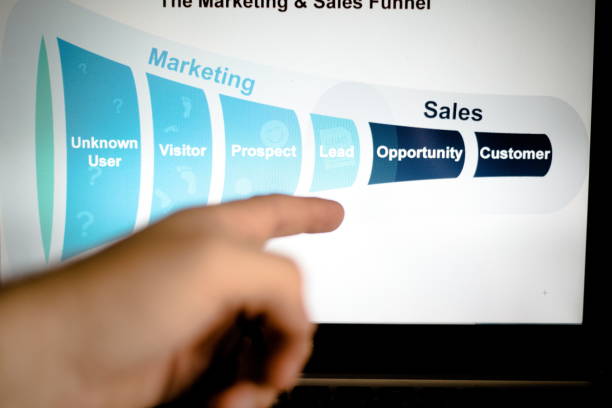9 Common Sales Pipeline Mistakes Brands Should Avoid
A strong sales pipeline is at the heart of any fast-growing business.
But maintaining it can be difficult. Even a thriving sales pipeline tends to stagnate. This could be compounded by common mistakes under the noses of experienced managers and business managers.
Let's learn more about these errors and what you can do to avoid them.
How do sales pipeline errors impact your business?A sales pipeline gives you insight into your baseline revenue potential. It helps you assess the number of realistic sales opportunities directly related to the health, profitability and growth of your business.
If you have an inefficient or error-ridden pipeline, you can:
Lost revenue: Many factors contribute to lost sales when your pipeline is not optimized. These can range from bad deals to missing leads, reducing sales for your brand. Difficulty setting sales targets: Without the right filters for your sales pipeline, some leads may not fit your ideal customer profile. In this case, you have to constantly reconsider and revise your goals because they don't match your product. Dry up your pipeline: You are more prone to exhausting your resources without a proper sales pipeline. The biggest contributors to a dry pipeline are poor quality leads and the inability to qualify good leads. Lower your sales team's morale: Morale suffers if your pipeline doesn't contain high-value deals and your team doesn't meet sales targets or revenue targets. This can become a big problem over time. 9 sales pipeline mistakes to avoidA sales pipeline is a visual snapshot that predicts your business growth in the near future.
Companies with a well-stocked sales pipeline and a well-planned sales process saw an 18% increase in revenue growth. Additionally, fixing three errors in a pipeline can lead to 28% revenue growth. Therefore, ensuring the effectiveness of your sales pipeline is paramount and very beneficial.
However, since it involves many steps and steps, errors usually occur. Here are the most common sales pipeline mistakes.
1. Using Buyer Intent InappropriatelyBuyer intent is the likelihood that a person or organization will purchase a product or service. A company's buyer intent can be inferred by examining and evaluating behaviors such as web visits, resource consumption, media downloads, event attendance, etc.
>A selling cycle may seem linear on paper, but the path to buying is hardly linear. In a competitive environment and a noisy market, customers have hundreds of options to choose from. And buyer intent helps you get important information to determine whether a potential customer is ready to buy or not.
Here's how you can use buyer intent to optimize your pipeline:
Analyze existing customers: By analyzing your existing customers, you can identify the key steps that helped convert prospects into paying customers. You can track crucial activities and milestones for their conversion. Personalize your approach: Buyer intent can uncover a prospect's interests and even provide you with details such as who they are and what competitors they are considering with your product. This data can help you create a personalized pitch for your prospects. Improve your self-service model: Buyers want everything on their own terms. They already have access to information from a variety of sources, and buyer intent data can help you understand what information is critical to converting them. You can use it to quickly refine your online information and achieve set goals.When sales teams aren't using intent data for their pipeline, they may simply pass up the high-value deals. Here's what you can do to avoid this:
Study your existing customers and recently closed deals Examine their activity, data and conversations to identify critical signals bringing them closer to their goal Use these datasets to determine your intent signalsAll of this helps detect leads that are likely to convert, weed out unwanted leads, and displace unsolicited leads.

A strong sales pipeline is at the heart of any fast-growing business.
But maintaining it can be difficult. Even a thriving sales pipeline tends to stagnate. This could be compounded by common mistakes under the noses of experienced managers and business managers.
Let's learn more about these errors and what you can do to avoid them.
How do sales pipeline errors impact your business?A sales pipeline gives you insight into your baseline revenue potential. It helps you assess the number of realistic sales opportunities directly related to the health, profitability and growth of your business.
If you have an inefficient or error-ridden pipeline, you can:
Lost revenue: Many factors contribute to lost sales when your pipeline is not optimized. These can range from bad deals to missing leads, reducing sales for your brand. Difficulty setting sales targets: Without the right filters for your sales pipeline, some leads may not fit your ideal customer profile. In this case, you have to constantly reconsider and revise your goals because they don't match your product. Dry up your pipeline: You are more prone to exhausting your resources without a proper sales pipeline. The biggest contributors to a dry pipeline are poor quality leads and the inability to qualify good leads. Lower your sales team's morale: Morale suffers if your pipeline doesn't contain high-value deals and your team doesn't meet sales targets or revenue targets. This can become a big problem over time. 9 sales pipeline mistakes to avoidA sales pipeline is a visual snapshot that predicts your business growth in the near future.
Companies with a well-stocked sales pipeline and a well-planned sales process saw an 18% increase in revenue growth. Additionally, fixing three errors in a pipeline can lead to 28% revenue growth. Therefore, ensuring the effectiveness of your sales pipeline is paramount and very beneficial.
However, since it involves many steps and steps, errors usually occur. Here are the most common sales pipeline mistakes.
1. Using Buyer Intent InappropriatelyBuyer intent is the likelihood that a person or organization will purchase a product or service. A company's buyer intent can be inferred by examining and evaluating behaviors such as web visits, resource consumption, media downloads, event attendance, etc.
>A selling cycle may seem linear on paper, but the path to buying is hardly linear. In a competitive environment and a noisy market, customers have hundreds of options to choose from. And buyer intent helps you get important information to determine whether a potential customer is ready to buy or not.
Here's how you can use buyer intent to optimize your pipeline:
Analyze existing customers: By analyzing your existing customers, you can identify the key steps that helped convert prospects into paying customers. You can track crucial activities and milestones for their conversion. Personalize your approach: Buyer intent can uncover a prospect's interests and even provide you with details such as who they are and what competitors they are considering with your product. This data can help you create a personalized pitch for your prospects. Improve your self-service model: Buyers want everything on their own terms. They already have access to information from a variety of sources, and buyer intent data can help you understand what information is critical to converting them. You can use it to quickly refine your online information and achieve set goals.When sales teams aren't using intent data for their pipeline, they may simply pass up the high-value deals. Here's what you can do to avoid this:
Study your existing customers and recently closed deals Examine their activity, data and conversations to identify critical signals bringing them closer to their goal Use these datasets to determine your intent signalsAll of this helps detect leads that are likely to convert, weed out unwanted leads, and displace unsolicited leads.
What's Your Reaction?






















